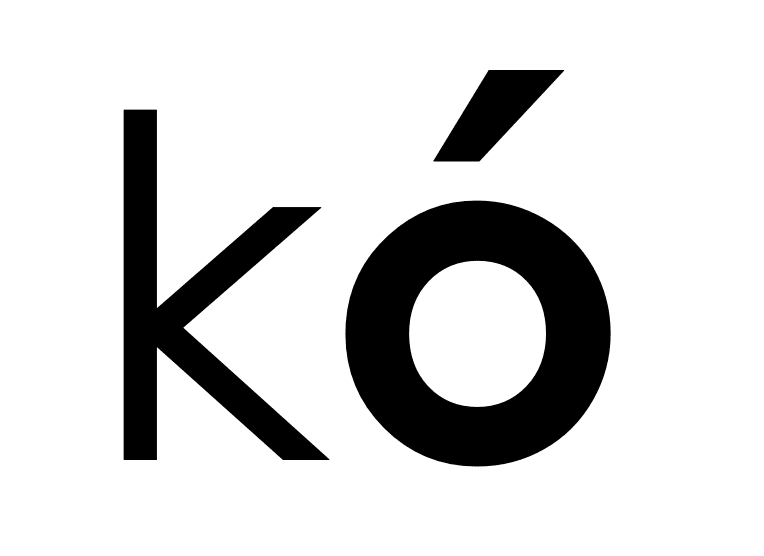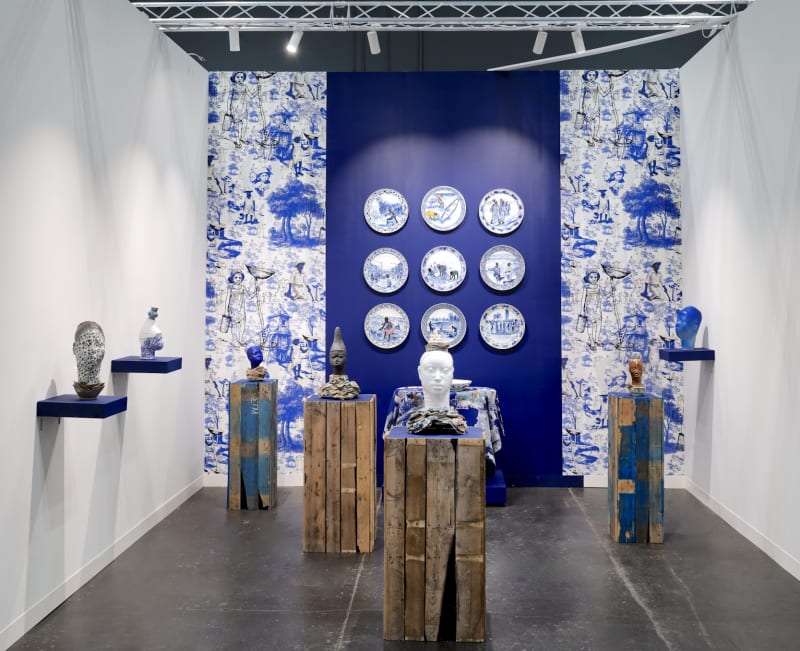The Armory Show: Victoria-Idongesit Udondian
kó is pleased to present Victoria-Idongesit Udondian at The Armory Show. This solo presentation debuts Udondian’s newest series, After the Last Supper (2024-2025).
Victoria-Idongesit Udondian (b. 1982, Nigeria) works across textiles, sculpture, installation, performance, photography, video, and, most recently, ceramics. Her practice is driven by an interest in textiles and the ways design shapes identity, drawing on the histories and tacit meanings embedded in everyday materials. Trained in tailoring, painting, sculpture, and new genres, she creates large-scale, interdisciplinary projects with textiles at their core, often informed by her experiences growing up in Nigeria. Udondian’s work interrogates the postcolonial condition within an increasingly globalized world, examining the intersections of migration, labour, and global trade.
In this new body of work, Udondian interrogates Africa’s colonial history, evolving cultural identity, and its shifting relationship with China in a postcolonial context. Against the backdrop of China’s expanding investments in Sub-Saharan Africa, particularly in natural resources, Udondian asks: Is this a new form of colonialism? A modern “scramble for Africa”? Or could it signal a reorientation toward new alliances beyond former colonial powers?
Referencing Leonardo da Vinci’s The Last Supper, Udondian employs its biblical connotations as a metaphor for the exploitation of African resources. The installation combines porcelain sculptures, hand-painted plates, and textiles, crafted from materials including porcelain, shards, wood, Qinqua paints, and printed fabrics, developed during her residency at Jingdezhen International Studio in China, the porcelain capital of the world. During her two-month residency, Udondian fabricated 3D printed porcelain and sourced found porcelain shards collected from Ghost Market, an early morning antique market in Jingdezhen, combining them to create hybrid forms.
Her research draws on historical objects taken from Africa during the colonial era, many now held in Western museums. Studying collections at the British Museum, the National Museum in Lagos, and the Smithsonian, she incorporated AI-powered 3D scans of African artifacts and Chinese antiquities. This includes the bronze head sculptures from Ife, originally created in the twelfth and thirteenth century, and unearthed by British colonial administrators in Nigeria in 1938. The removal of the Ife heads in Nigeria at the time spurred the government to control the further export of antiquities in Nigeria. Udondian also models sculptures after the iconic bronze head of Queen Idia, created in the Kingdom of Benin in the early sixteenth century, depicting the mother of the Oba. The Queen Idia bronze, now housed at the British Museum, was notoriously seized during the Benin Expedition of 1897, where British troops ransacked the Benin palace and stole over 2,500 objects. Udondian also models sculptures made from terracotta, produced by the Yoruba people in present day Nigeria during the twelfth-fifteenth century.
The work also engages with the legacy of Chinese blue-and-white (Qinqhua) Ming dynasty ceramics, coating her sculptural busts with Ming-inspired colors and patterns and adding elements of antique porcelain fragments. The porcelain of the Ming dynasty, produced in China between 1368-1644 CE, elevated the decorative arts of the medium to new heights, and was in popular foreign demand. Ming dynasty porcelain was absorbed into Victorian and aristocratic aesthetics and now signifies more broadly the long history of globalization and complicated narrative of cultural consumption. The city of Jingdezhen, where Udondian undertook her artist residency, was the center of ceramic production in China from as early as the sixth century. These objects, which Udondian regards on one hand as signifiers of colonialism, form the starting point for her exploration of Sino-African relationships.
In After the Last Supper, these intertwined references merge with imagery of colonial Africa, Nigerian daily life, and archival references to mining’s environmental impacts.
The resulting porcelain plates and textiles—drawing from the narrative designs found on Ming ceramic motifs and African commemorative fabrics—form an immersive sculptural installation. Through the metaphor of global decorative arts, Udondian probes the entanglements of history, culture, and power.

About the Artist
Victoria-Idongesit Udondian (b. 1982, Akwa Ibom, Nigeria) received her B.A. in Fine Arts (Painting) from the University of Uyo, Nigeria, in 2004, and her MFA in Sculpture and New Genres from Columbia University, New York, in 2016. She also attended the Skowhegan School of Painting and Sculpture, Maine, She is currently Visiting Associate Professor of Art at the University at Buffalo, SUNY, New York.
Udondian was awarded a Guggenheim Fellowship in 2020 and the Pollock-Krasner Grant in 2018. She has participated in numerous residencies, including Fountainhead (Miami, 2023), Instituto Sacatar (Bahia, Brazil), MASS MoCA (Massachusetts), Fine Arts Work Center (Provincetown), Villa Strauli (Winterthur, Switzerland), Fondazione di Venezia (Italy), and Bag Factory Studios (Johannesburg).
Her work has been exhibited at institutions such as the Fischer Landau Center for the Arts (New York), the Bronx Museum, the Children’s Museum of Manhattan, the National Museum (Lagos), the Whitworth Gallery (Manchester), the South London Gallery, and Villa Strauli Art Centre (Switzerland). Recent solo exhibitions include How Can I Be Nobody at Smack Mellon, New York (2022), and Adape 1 at The Arts Collaboratory, University at Buffalo (2021). Recent group exhibitions include the British Textile Biennial (Blackburn, UK, 2023), Fragmented World/Coherent Lives at Ten North Group Gallery (Miami, 2023), and Hacer Noche: Promised Land Biennial at Museo Textil de Oaxaca (Mexico, 2022).Her work is held in the permanent collections of the National Gallery of Art (Nigeria), the West Collection (Philadelphia), and the Fondazione di Venezia (Italy).














